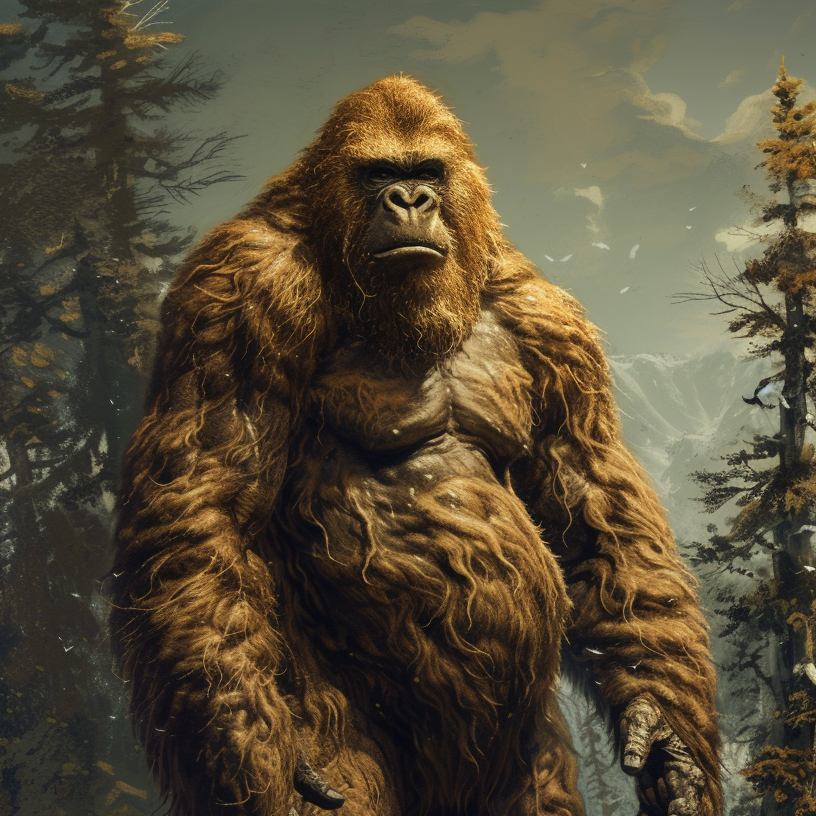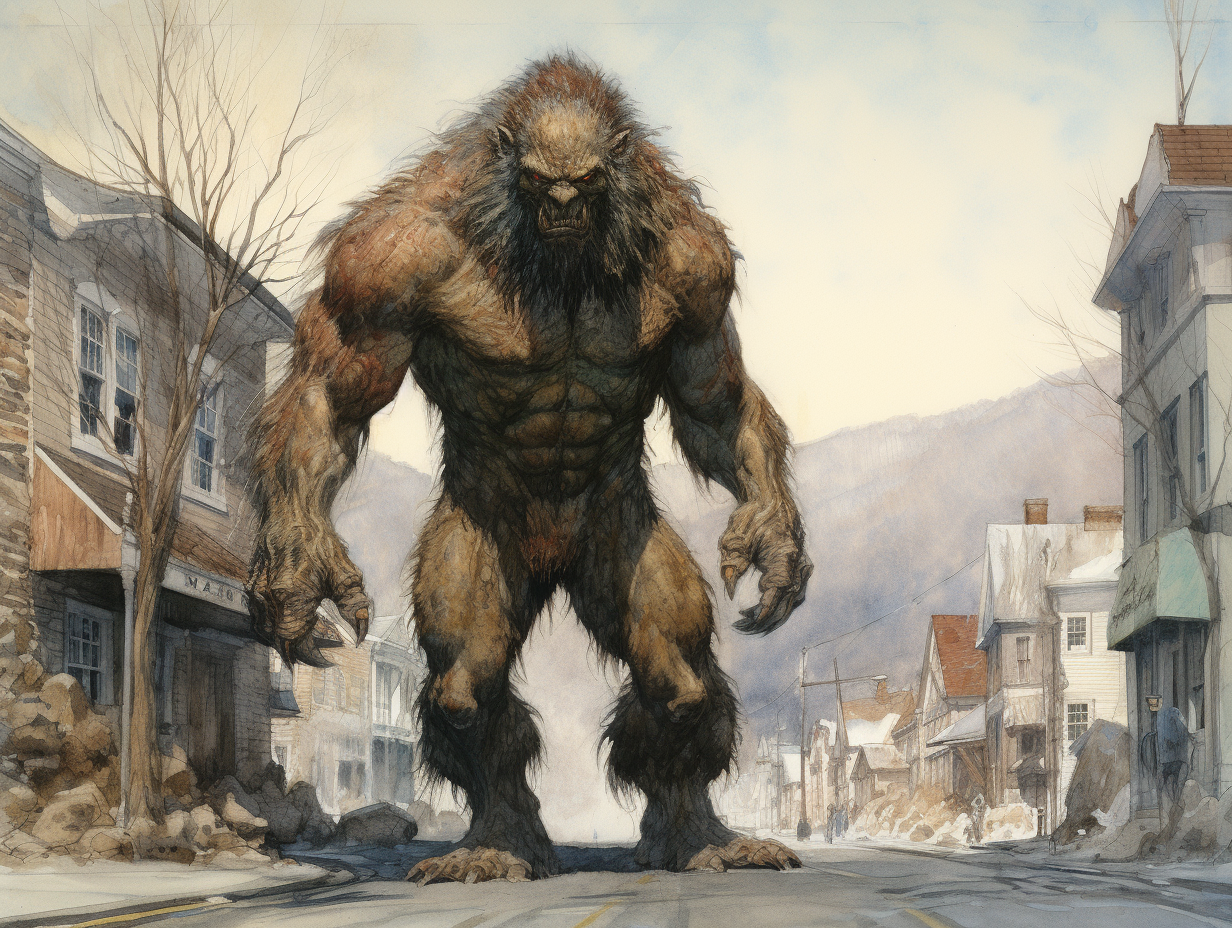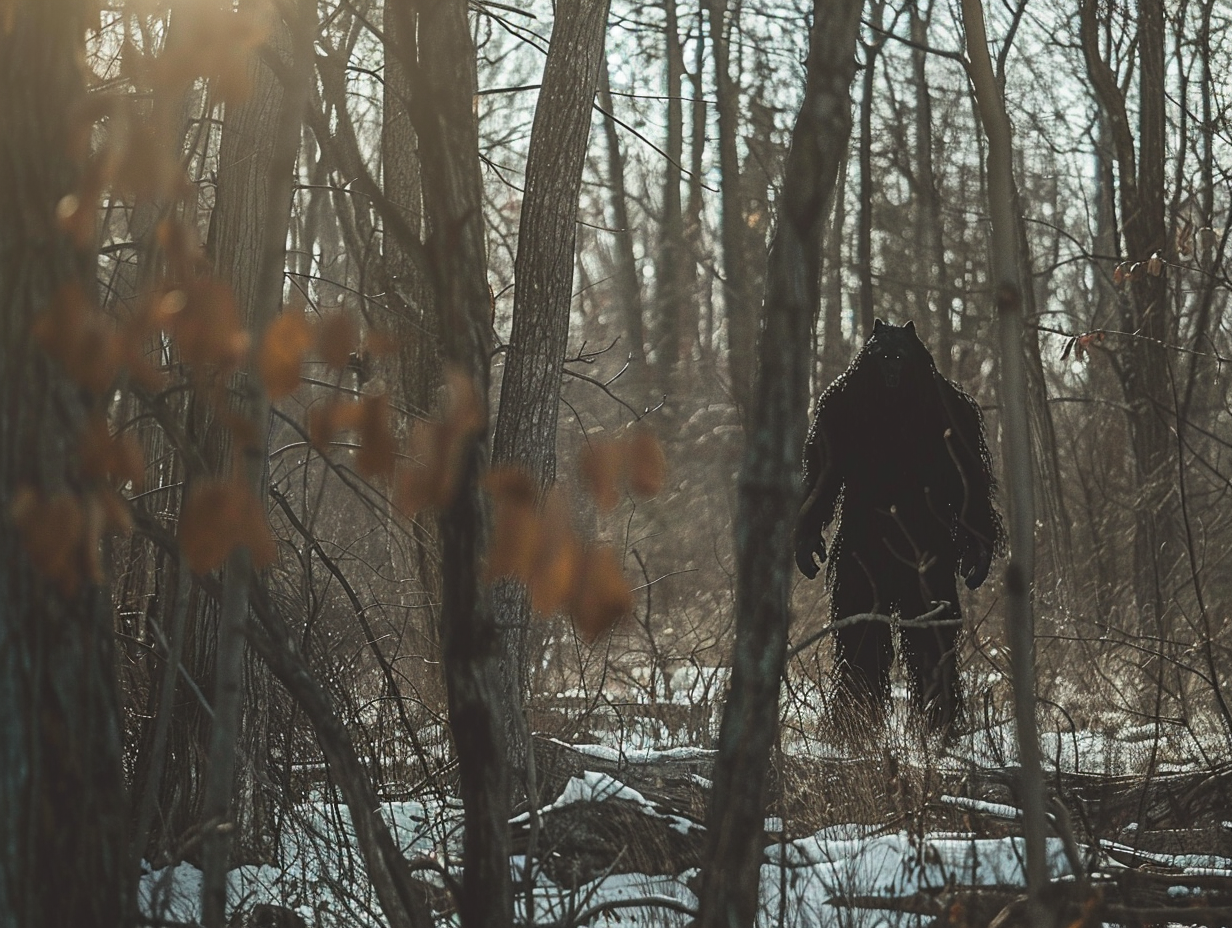Bigfoot 101: What is a Bigfoot and could they really be real?
If you were wondering whether the plural of Bigfoot is Bigfeet...i'm afraid it's not.
Keep reading to learn more fun facts about this elusive cryptid in my round-up of Bigfoot basics below.
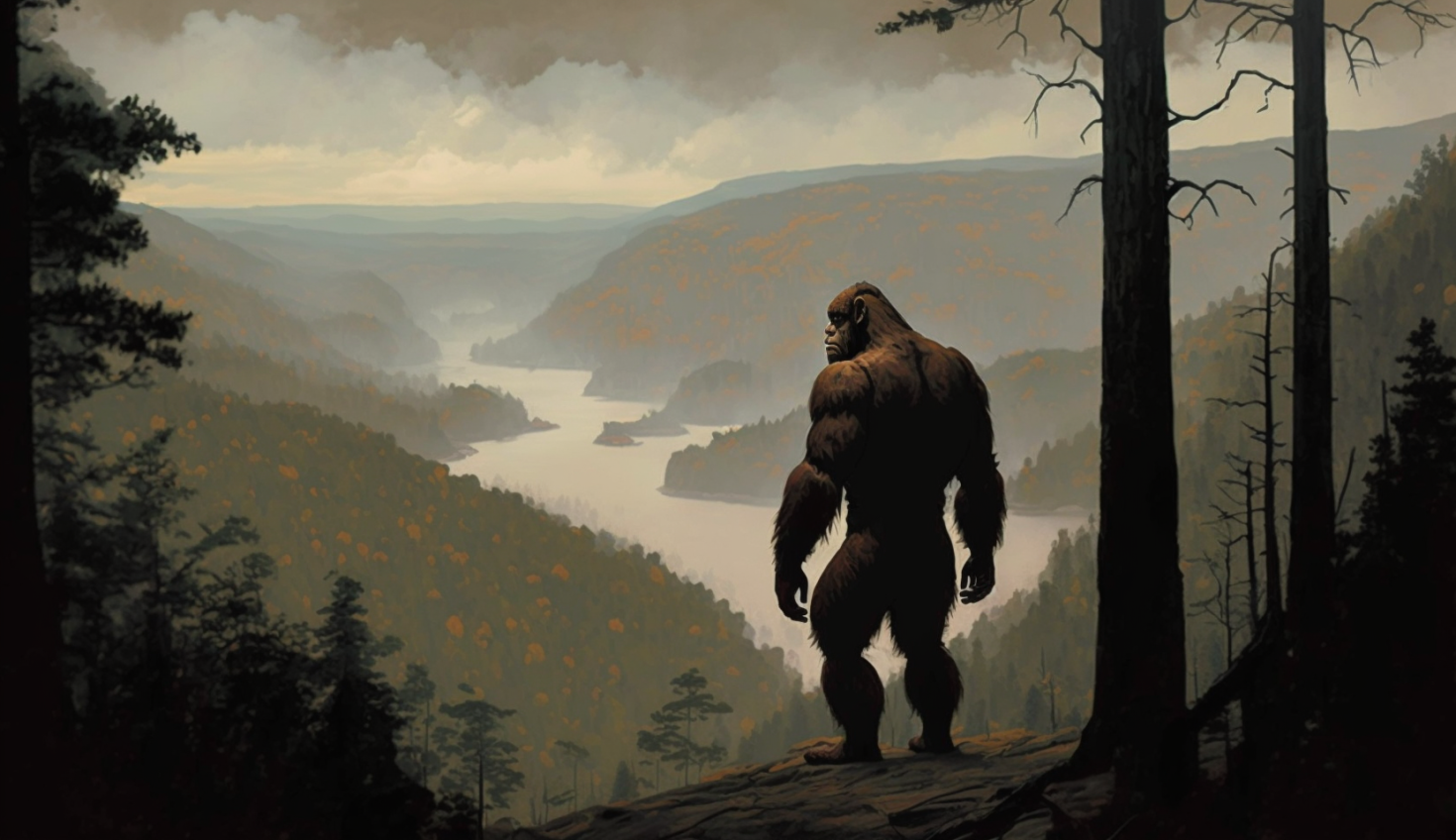
The lore of Bigfoot has sparked the curiosity of people all over the world.
But what exactly is a Bigfoot? Is it a creature of myth and legend, or something much more sinister?
In this article, we'll journey into the heart of this mystery and explore the different types of Bigfoot that have been reported over the years.
From the classic hairy beast to the elusive white Bigfoot, and even the rarely spoken of female Bigfoot.
And as we uncover the truth about this elusive creature, we'll confront the question that has haunted mankind for generations: is Bigfoot real or just a figment of our imagination?
So come with me, as we explore the depths of this mystery and uncover the truth about the legendary creature known as Bigfoot.
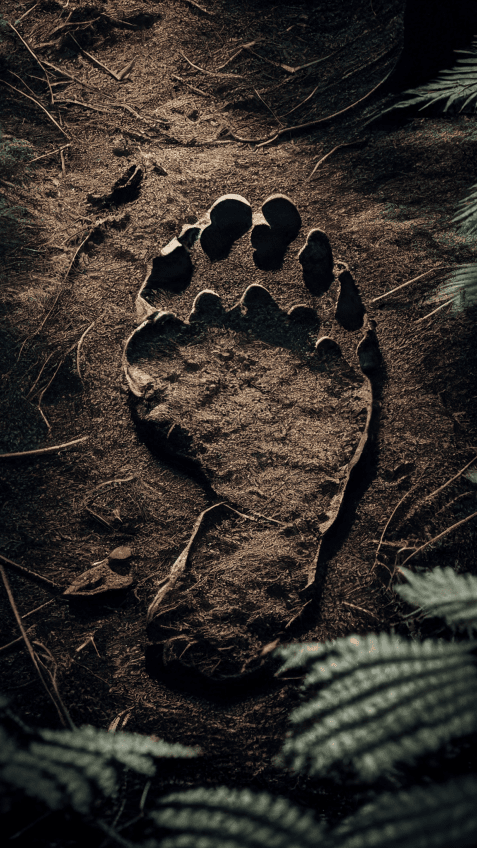
What is a Bigfoot?
A Bigfoot is a renowned, legendary figure in North America and in particular, in US folklore (and beyond).
Classified as a "Cryptid" (or a creature whose existence is yet to be substantiated), Bigfoot is reported to be a colossal, humanoid creature that roams forests and mountainous areas.
Described as being entirely covered in dark brown or black fur and possessing a robust, well-built physique with broad shoulders, the creature's face is said to resemble that of an ape, with deep-set eyes, a prominent brow ridge, and a flattened nose.
Its elongated, powerful arms and footprints bear five toes with a pronounced arch.
Reports also suggest that Bigfoot is incredibly tall, with estimates ranging from 6 to 10 feet in height.
And its apparently enormous foot size is another aspect that often gets people talking, with footprints measuring up to 24 inches.
Or the equivalent of an extra-large pizza.
As for where Bigfoot is believed to come from, many of the reported sightings have occurred in the Pacific Northwest region of the United States. Particularly in the dense forests of Washington and Oregon, making this a very American cryptid.
However, reports of Bigfoot sightings have also come from all over the world, with encounters being reported in places as far-flung as Nepal, Russia, and Australia.
While some people have already decided that every report is a hoax and there is no such thing as Bigfoot.
It’s worth noting that in the world of Cryptozoology and Bigfoot research where a final determination has not been reached, reports of sightings are given rigorous interrogation.
Not every “sighting" is instantly deemed credible. Far from it.

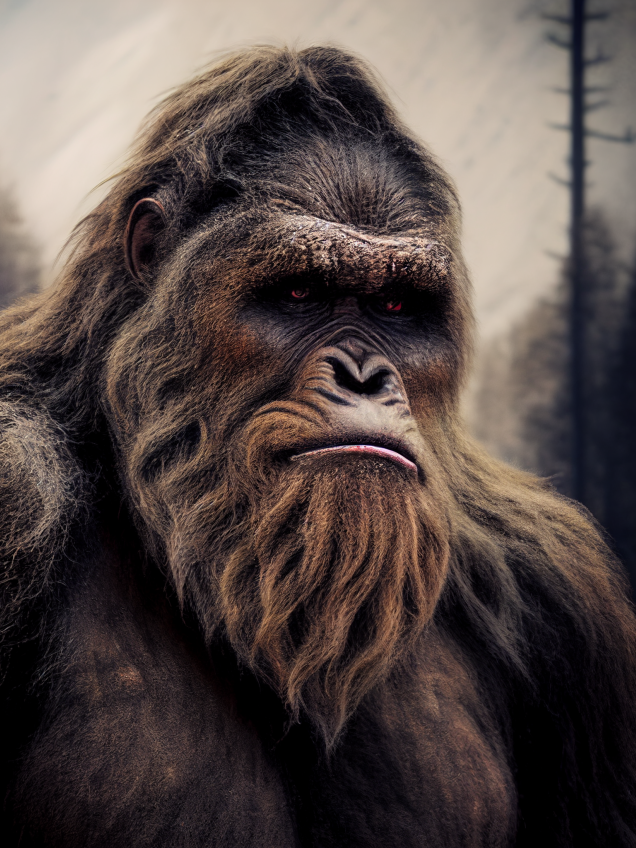
Types of Bigfoot
While a Bigfoot is generally described as a large, hairy, humanoid creature, there have been various reports of different types of Bigfoot throughout history.
These reports often describe differences in physical appearance, behavior, and location.
One type of Bigfoot that's been reported is the "Wood ape" which is typically described as being dark brown with shaggy fur, and a more pronounced brow ridge than other Bigfoot varieties.
Reports of the wood ape often come from the southern United States, particularly the Ozark Mountains.
Another type of Bigfoot that's been reported is the "skunk ape."
This variation is characterized by its strong, pungent odor and is typically reported in the southeastern United States, particularly in the swamps and marshes of Florida.
In Russia, a cryptid similar to Bigfoot or Sasquatch called “Almasty” is said to inhabit remote regions of the Caucasus and Pamir Mountains in central Asia and the Caucasus region.
The Almasty is often described as being similar in appearance to Bigfoot or Sasquatch, with shaggy, dark hair covering its body.
However, some reports describe the Almasty as having a more human-like appearance, with lighter-colored hair and more refined features.
The creature is said to be nocturnal and reclusive, making sightings rare and often unreliable (a common occurrence in the Cryptid world).
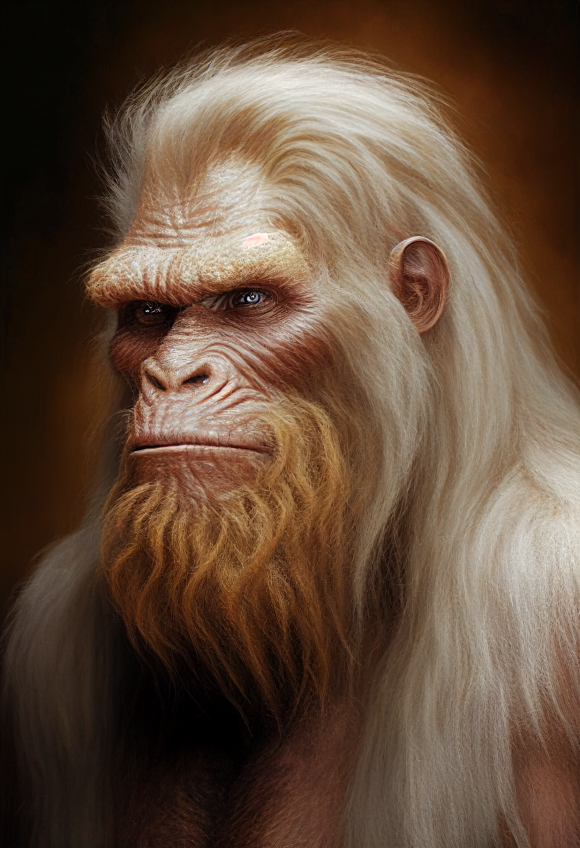
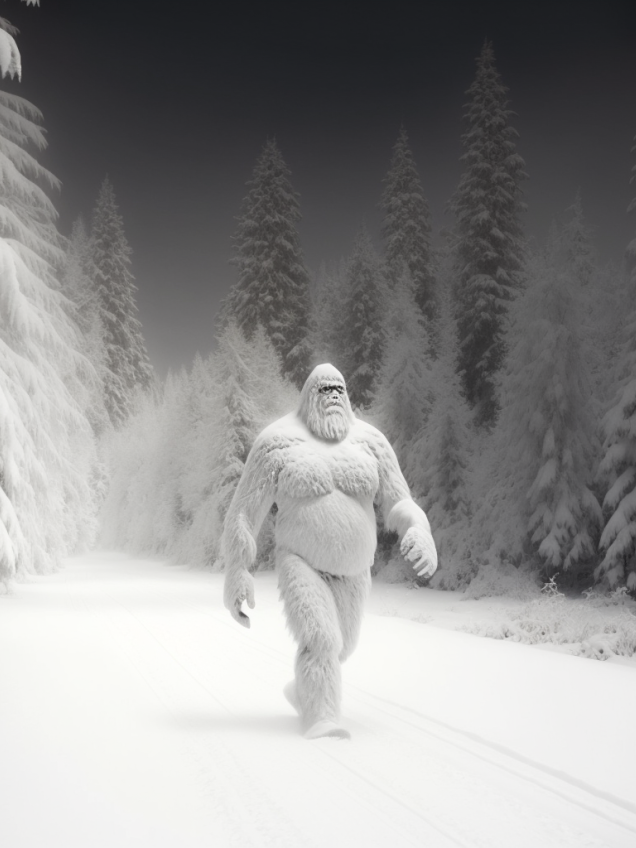
A few reports have also described a white Bigfoot.
Some people believe that there may be a specific sub-species of Bigfoot known as the "Yeti of the Northwest" or the "Northwest White Bigfoot”.
Reports of this creature typically describe it as having white or light-colored fur and being seen in areas with heavy snowfall, such as the Cascade Mountains in Washington state.
While there's no conclusive evidence to support the existence of a white Bigfoot, or any Bigfoot, some speculate that it may be a sub-species of the standard Bigfoot, adapted to colder climates. Or perhaps it’s just a bear in the snow…
Aside from physical differences, there have also been reports of behavioral differences between different types of Bigfoot.
For example, some reports indicate that the skunk ape is more aggressive than other types of Bigfoot, while others describe the wood ape as being more elusive and reclusive.

What is Sasquatch?
Sasquatch is another term that's often used interchangeably with Bigfoot. While the two terms are often used to describe the same creature, there are some differences in the way they're understood.
Sasquatch is a term that originates from the indigenous peoples of the Pacific Northwest region of North America. It's typically used to describe a large and hairy creature that's said to inhabit the dense forests of the region.
One of the main differences between Bigfoot and Sasquatch is their geographic location. While Bigfoot is often associated with the forests of the Pacific Northwest, Sasquatch is more commonly associated with the coastal areas of the region.
Another difference between the two terms is their cultural context. While Bigfoot is a term primarily used in the Western world, Sasquatch has deep cultural significance to the indigenous peoples of the Pacific Northwest, who have a long history of stories and traditions surrounding this legendary creature.
There's still debate among researchers and enthusiasts as to whether Bigfoot and Sasquatch are actually the same creature. While some argue that the two terms are simply different names for the same creature, others believe that there may be subtle differences in physical appearance or behavior that distinguish the two.
Female Sasquatch?
So while Bigfoot, or Sasquatch, has been described to varying degrees as a beastly, hairy man-like creature. There has in fact been some debate as to whether there are also female members of this species. A female Sasquatch.
One of the main challenges in identifying female Bigfoot is the lack of physical evidence. Most reported sightings of Bigfoot focus on a solitary creature, making it difficult to determine whether the creature is male or female.
However, some researchers point to physical differences between male and female primates, such as breast size and hip shape, as potential indicators of a female Bigfoot.
In Bigfoot folklore, female Bigfoot are often portrayed as nurturing and protective figures, with some accounts suggesting that they may even have supernatural powers.
In some Native American traditions, for example, female Bigfoot are believed to have healing abilities and are often associated with the moon.
While the existence of female Bigfoot remains a topic of debate and speculation, their role in Bigfoot folklore and mythology is an important part of the ongoing fascination with this mysterious and elusive creature.
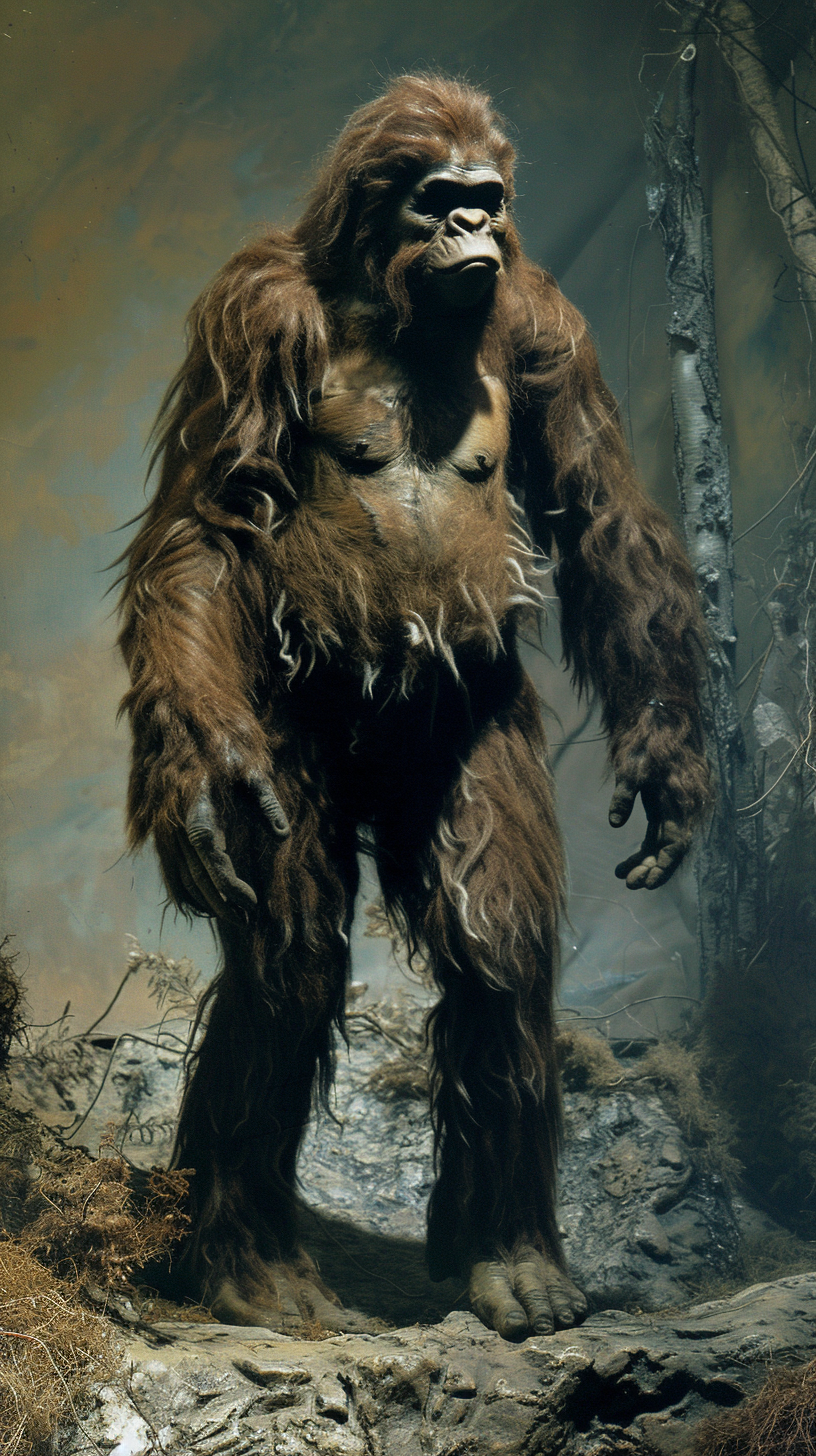
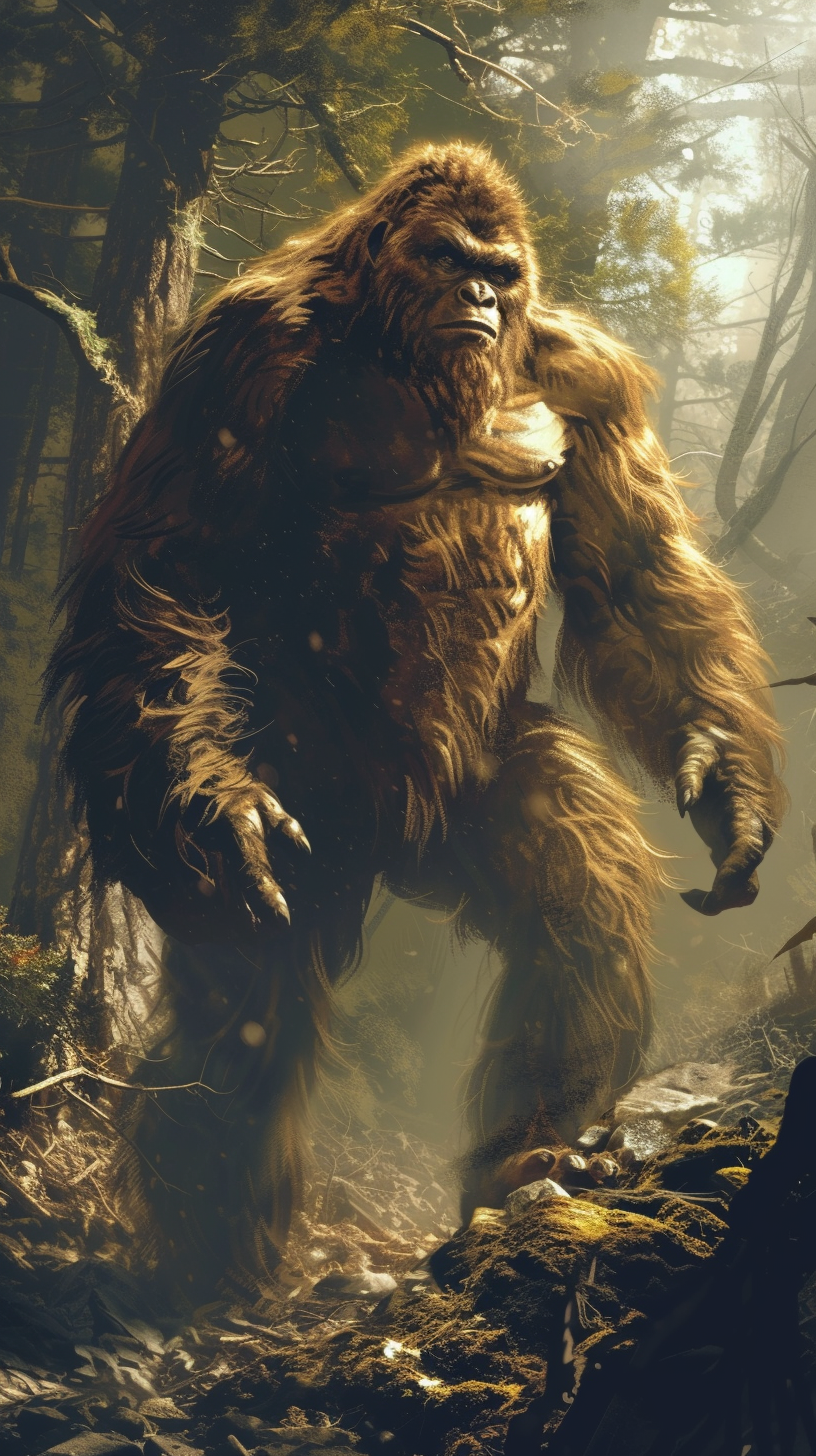
Origins and sightings
Bigfoot sightings have been reported all over the world, but the first recorded sighting of Bigfoot in North America dates back to the 1920s.
Since then, there have been numerous sightings of Bigfoot reported in different parts of the world.
Despite years of research and investigation, the origins of Bigfoot remain a mystery. Some believe Bigfoot is a prehistoric relic, while others suggest it could be an undiscovered species of primate.
Regardless of its origins, Bigfoot sightings have continued to capture the public's imagination, with many people claiming to have seen the elusive creature.
Some of the most famous sightings of Bigfoot have taken place in the Pacific Northwest region of the United States, but sightings have also been reported in other parts of the country and around the world.
What sound does bigfoot make?
According to eyewitness accounts, Bigfoot is said to make a range of vocalizations that include high-pitched screams, growls, and even whistles. Some researchers have gone as far as creating a database of these sounds, hoping to identify any patterns or possible meanings.
One of the most commonly reported vocalizations of Bigfoot is the "whoop" sound, a long and drawn-out howl that is often heard at night. Other sounds attributed to Bigfoot include grunts, moans, and even mimicry of other animals.
There is much debate over the purpose of these vocalizations. Some researchers believe that they are used to communicate with other Bigfoot (seriously, why not Bigfeet?).
Other researchers speculate that they are used as a form of territorial marking. Still, some suggest that these sounds are simply a form of expression, similar to how humans use speech to convey emotions and thoughts.
While the exact meaning and purpose of Bigfoot's vocalizations remain a mystery, they are an important part of the lore and fascination surrounding this legendary creature.
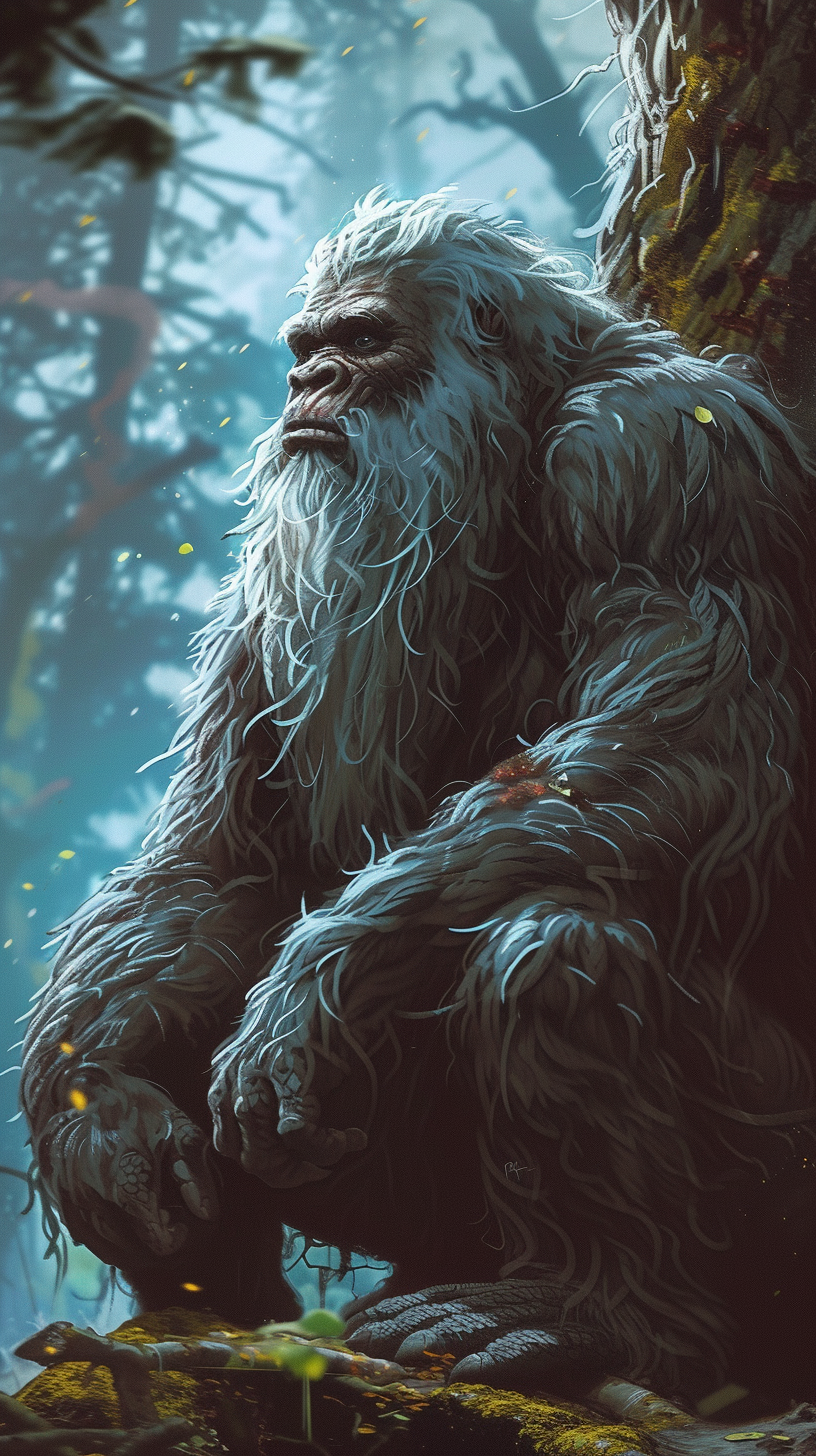
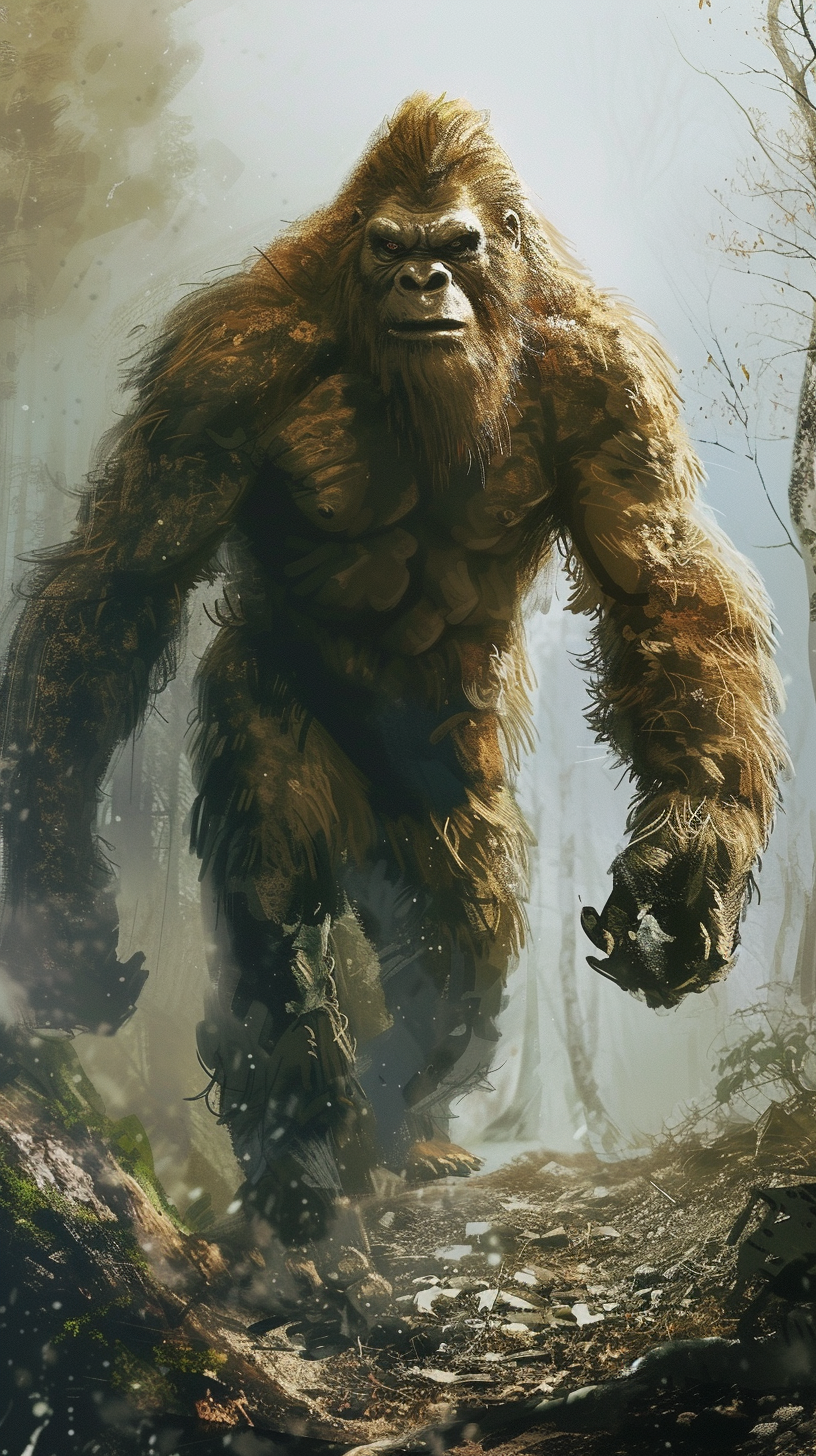
Does Bigfoot really exist?
The existence of Bigfoot has been a topic of debate for decades. While some people firmly believe in its existence, others remain skeptical.
One school of belief is that Bigfoot could be a previously undiscovered species of ape or primate. While others suggest that it could be a surviving population of an extinct hominid (a hominid is a type of animal that includes humans and some of our extinct relatives, like Neanderthals. So, like a big family of animals that are similar to us, but not exactly the same).
A popular call for such an extinct creature is the Gigantopithecus, an extinct genus of apes that lived in Asia around 9 million years ago to as recently as 100,000 years ago.
They were the largest known primates that ever lived, standing up to 10 feet tall and weighing as much as 1,200 pounds. They had a mainly vegetarian diet and lived in forests. Today, scientists have only found fossils of their teeth, jaw, and some bone fragments.
There is no concrete scientific evidence that proves or disproves the existence of Bigfoot. Many reported sightings of Bigfoot have been debunked, while others remain unexplained.
Some researchers believe that Bigfoot could be a type of undiscovered primate, while others suggest it could be a hoax or misidentification of known animals.
So what’s it like in the world of Bigfoot believers?
Firstly, there are many people who believe in Bigfoot, with some estimates putting the number in the millions.
The belief in Bigfoot is not limited to a particular demographic, as people from all walks of life and all parts of the world claim to have seen or heard of the creature.
Now’s a good time for me to throw my own opinions around. Do I believe in Bigfoot? Not really, I’m a natural skeptic. Do I definitely believe Bigfoot could not exist. Nope. But I just really enjoy going for the ride and hearing about mysterious sightings and stories.
Some people are convinced of Bigfoot's existence due to their own sightings or encounters. Which is fair enough. Others believe based on accounts from friends or family members.
Additionally, many people are drawn to the mystery and intrigue surrounding Bigfoot, making it a topic of fascination for enthusiasts and skeptics alike.
There are even groups and organizations solely devoted to Bigfoot research and investigation, such as the Bigfoot Field Researchers Organization (BFRO) and the North American Wood Ape Conservancy (NAWAC).
These groups conduct field investigations, gather evidence, and share information about Bigfoot sightings and encounters.
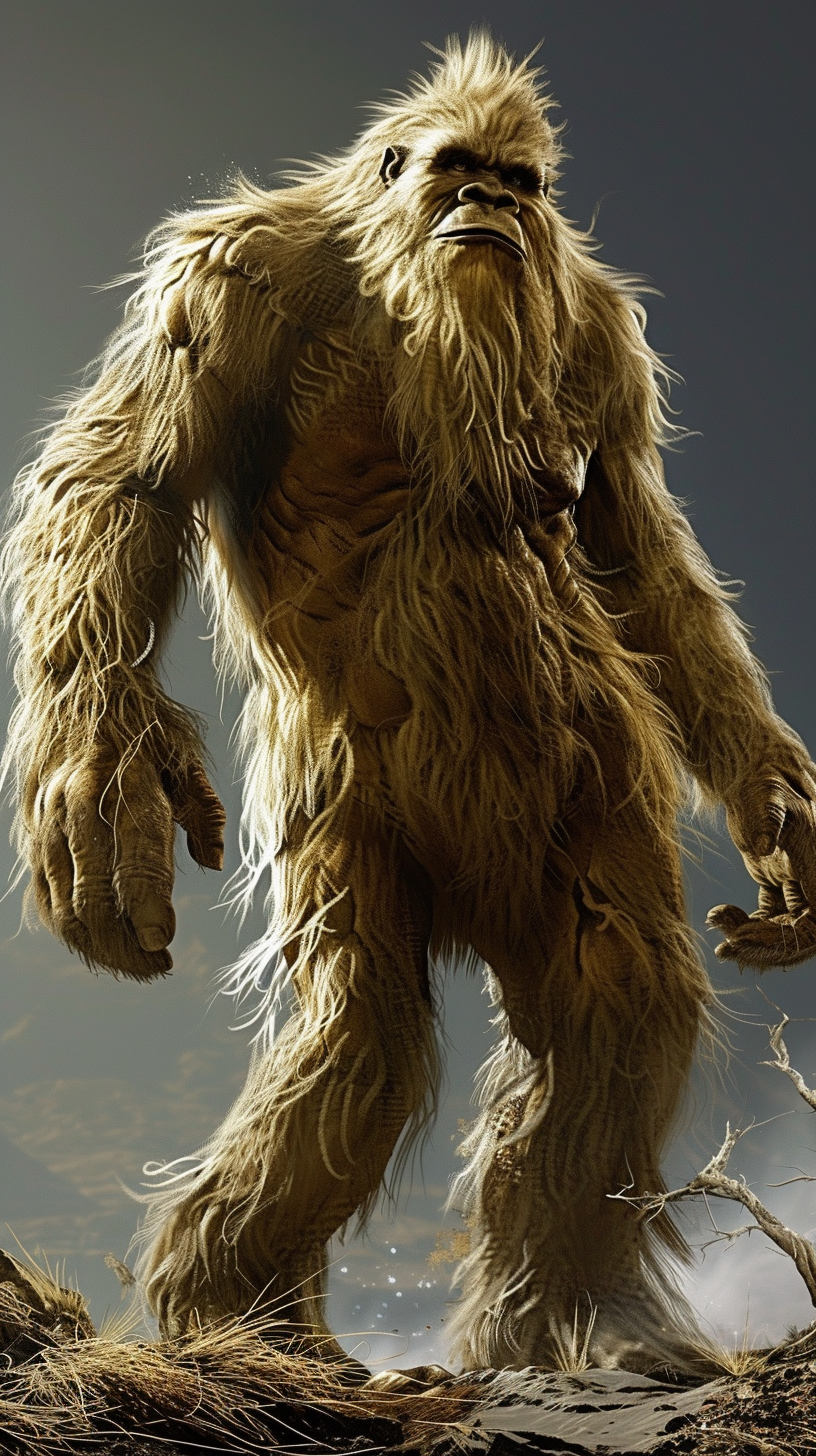
While the existence of Bigfoot remains a mystery, its impact on popular culture and fascination with its elusive nature continue to intrigue people worldwide. Whether you believe in its existence or not, the legend of Bigfoot will continue to captivate our imaginations for years to come.
More cryptid stories
Get to know these fascinating stories.
The legend of El Chupacabra
Get the lowdown on this mysterious creature of South American folklore.
The Grafton Monster of West Virginia
Never heard of it? Find out what's lurking around down in West Virginia...
The Michigan Dogman
Is it a man? Is it a dog? Is it just a figment of our imagination? Check it out now.


